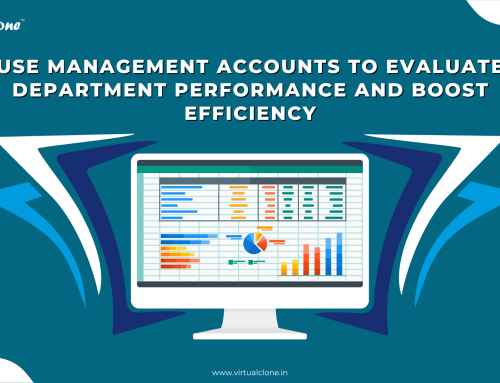The hybrid model for accounts outsourcing is transforming how modern accounting firms operate. As firms face mounting pressure from rising operational costs, talent shortages, and increasing demand for flexibility, traditional outsourcing models—whether fully onshore or entirely offshore—are proving insufficient. They often lack the balance needed between cost efficiency, service quality, and operational control.
In response, forward-thinking firms are adopting a smarter alternative: the hybrid outsourcing model. By combining the strengths of onshore teams with the scalability and cost-effectiveness of offshore support, this approach delivers a more agile, efficient, and client-centric way to manage accounting workflows.
In this guide, we’ll explore how the hybrid model for accounts outsourcing works, the key benefits and challenges it presents, and proven best practices to implement it successfully in your firm.
What Is the Hybrid Model for Accounts Outsourcing?
The hybrid model for accounts outsourcing is a framework where accounting firms strategically divide their operations between in-house (onshore) teams and external (offshore or nearshore) partners. Instead of fully outsourcing or keeping everything internal, firms retain control over critical, client-facing, and judgment-intensive activities while leveraging global talent for routine, process-heavy, or specialized tasks.
Key features:
- Onshore teams manage client advisory, compliance, regulatory reporting, and high-value consulting.
- Offshore teams handle transactional work such as bookkeeping, accounts payable/receivable, payroll processing, and reconciliations.
- Nearshore teams may be included for tasks requiring closer time zone alignment or cultural compatibility.
This model is designed to optimize costs, maintain quality, and provide the scalability modern firms need.
Why Are Accounting Firms Adopting the Hybrid Model?
1. Cost Optimization Without Sacrificing Quality
The hybrid model allows firms to reduce operational expenses by offshoring routine work while retaining high-value, client-facing activities onshore. This division can lead to significant cost savings—often 30–40%—without compromising on quality or control.
2. Scalability and Operational Agility
Busy seasons, regulatory changes, and client growth often create unpredictable workloads. The hybrid model enables firms to scale operations up or down quickly, deploying offshore resources for volume spikes while keeping core teams focused on strategic work.
3. Access to Global Talent and Specialized Skills
Talent shortages are a persistent challenge. Hybrid outsourcing opens access to a global pool of skilled professionals, including those with expertise in IFRS, US GAAP, automation, and analytics.
4. Retained Control and Enhanced Quality
Critical functions remain internally governed, ensuring compliance, data security, and alignment with client expectations. This mitigates the risks associated with fully offshore models.
5. Improved Collaboration and Innovation
Blending onshore and offshore teams fosters a collaborative culture. Regular knowledge sharing and cross-cultural learning can drive innovation and improve problem-solving capabilities.
How Does the Hybrid Model for Accounts Outsourcing Work?
Task Allocation: A Strategic Division of Work
A successful hybrid model starts with clear task allocation. Here’s a typical breakdown for accounting firms:
| Accounting Function | Onshore Team (Internal) | Offshore Team (External) |
|---|---|---|
| Client Advisory & Relationship | Yes | – |
| Regulatory Compliance | Yes | – |
| Complex Tax Planning | Yes | – |
| Financial Reporting (Final Review) | Yes | – |
| Bookkeeping & Data Entry | – | Yes |
| Accounts Payable/Receivable | – | Yes |
| Payroll Processing | – | Yes |
| Reconciliations | – | Yes |
| Management Reporting (Drafts) | – | Yes |
| Year-End Preparation | Yes | Yes (Support) |
The model is flexible; some firms may keep payroll onshore for sensitive clients, while others offshore it entirely.
Benefits of the Hybrid Model for Accounts Outsourcing
1. Cost-Effectiveness
By leveraging offshore talent for routine tasks, firms can reduce operational expenses by 30–60% compared to a fully onshore model. These savings can be reinvested in technology, staff development, or client services.
2. Enhanced Quality and Compliance
Onshore teams focus on high-value, judgment-based work, ensuring that client deliverables meet regulatory standards and firm policies. Offshore teams, meanwhile, bring process efficiency and adherence to best practices.
3. Flexibility and Rapid Scaling
The hybrid model allows accounting firms to respond quickly to market changes, client needs, and regulatory updates. Resources can be scaled up for busy periods or new service lines without the delays of traditional hiring.
4. Risk Mitigation
Distributing work across multiple geographies reduces dependency on a single location, enhancing business continuity and resilience against local disruptions or talent shortages.
5. Improved Client Experience
With routine work handled offshore, onshore teams can devote more time to client advisory and relationship management, leading to higher client satisfaction and retention.
Challenges of the Hybrid Model for Accounts Outsourcing
While the hybrid model offers clear benefits, it is not without challenges. Accounting firms must proactively address the following:
1. Communication and Cultural Differences
Time zone gaps and cultural nuances can create misunderstandings and slow down workflows. Firms must invest in robust communication tools, regular check-ins, and cross-cultural training to bridge these gaps.
2. Data Security and Confidentiality
Accounting data is highly sensitive. Firms must implement strict data protection protocols, ensure compliance with privacy laws in all jurisdictions, and restrict offshore access to only necessary information.
3. Integration and Workflow Management
Syncing internal systems and processes with those of external partners can be complex. Standardized workflows, shared project management platforms, and clear documentation are essential to smooth integration.
4. Quality Assurance
Maintaining consistent quality across geographies requires regular audits, clear service level agreements (SLAs), and a culture of accountability.
Best Practices for Implementing the Hybrid Model for Accounts Outsourcing
- Define Clear Roles and Responsibilities: Map out which tasks are best suited for onshore versus offshore teams. Communicate these boundaries to all stakeholders to avoid confusion.
- Choose the Right Outsourcing Partners: Select partners with proven expertise in accounting, robust data security practices, and a track record of compliance with international standards.
- Invest in Technology: Adopt cloud-based accounting platforms, secure file-sharing tools, and real-time communication channels to enable seamless collaboration and workflow integration.
- Foster a Unified Culture: Encourage regular interaction between onshore and offshore teams through joint training, virtual team-building activities, and knowledge-sharing sessions.
- Monitor, Measure, and Optimize: Establish KPIs for both teams, conduct regular performance reviews, and solicit feedback from staff and clients. Use these insights to refine processes and maximize value.
Real-World Example: Hybrid Model in Action
Consider a mid-sized UK accounting firm serving a diverse client base. During tax season, the firm’s onshore accountants focus on client consultations, complex tax planning, and final review of filings. Meanwhile, an offshore team in India or the Philippines handles data entry, reconciliations, and draft report preparation.
The firm uses cloud accounting software to ensure both teams have real-time access to the latest data. Weekly video calls and daily Slack updates keep everyone aligned. Sensitive client data is protected through encrypted channels and role-based access controls.
This model allows the firm to:
- Process higher volumes of work without increasing headcount.
- Offer faster turnaround times to clients.
- Free up senior staff for advisory and business development.
The Future of Accounting: Why the Hybrid Model Is Here to Stay
A recent Everest Group survey found that 66% of finance organizations are incorporating a hybrid operating model to make finance more agile and resilient. More than 40% of organizations leveraging third-party support are driving organization-wide digital adoption, compared to less than 30% of those that are not. As accounting becomes more digitized and client expectations evolve, the hybrid model provides the flexibility, cost savings, and operational control firms need to stay competitive.
Conclusion
The Hybrid Model for Accounts Outsourcing is not just a cost-saving tactic—it is a strategic enabler for accounting firms aiming to deliver higher value, scale effortlessly, and future-proof their operations. By blending onshore expertise with offshore efficiency, firms can optimize costs, maintain quality, and provide exceptional client service.
To succeed, firms must approach hybrid outsourcing with careful planning, robust technology, and a commitment to collaboration and continuous improvement. For those that do, the hybrid model is not just a trend, it is the blueprint for sustainable growth in modern accounting.
Resources:
- https://www.auxis.com/why-a-hybrid-outsourcing-model-is-the-new-normal/
- https://www.linkedin.com/pulse/outsourcing-models-key-considerations-challenges-aec-knvof
- https://www.chatagents.com/articles/hybrid-outsourcing-guide-mastering-success-strategies/
- https://itcgroup.io/our-blogs/why-business-should-consider-hybrid-outsourcing-model/
- https://www.linkedin.com/pulse/why-business-should-consider-hybrid-outsourcing-model-itcgroupio-fljpc
- https://helpsquad.com/hybrid-outsourcing/






